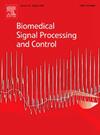SPSNet: A spiking neural network with relation graphs for sleep stage classification based on polysomnography
IF 4.9
2区 医学
Q1 ENGINEERING, BIOMEDICAL
引用次数: 0
Abstract
Sleep is crucial to human health, and in recent years, automatic sleep stage classification based on polysomnography(PSG) has become a hot topic in sleep science research. With the rapid development of artificial intelligence technology, especially the wide application of deep learning methods, the research on automatic sleep stage classification has made significant progress. However, existing methods mainly focus on time–frequency feature extraction and channel selection of signals, often ignoring the deep impact of biological mechanisms such as neuronal impulses on sleep stage classification. To this end, we propose a deep learning model called SPSNet, which innovatively introduces the impulse mechanism of a spiking neural network(SNN) and the structure of relational graph based on the transformation of the Watts–Strogatz(WS) small-world network into the epoch-level multi-channel sleep feature fusion process. This design not only achieves efficient sparse computation through SNN, but also enhances the interaction between neurons and improves the overall model performance through the relational graph structure. Experimental results on three public datasets(UCD, SleepEDF-78, HMC) show that SPSNet significantly improves the classification performance while effectively reducing network complexity and energy consumption compared to the baseline model approach, the accuracy(ACC) on the three datasets were 0.772, 0.807, and 0.775, the F1-score(MF1) were 0.761, 0.758, and 0.756, and the Cohen’s Kappa() was 0.703, 0.739, and 0.706, representing improvements of 0.3% to 1.8% over the respective best baseline models. Overall, our work provides a new way of thinking for automatic sleep stage classification that combines spiking neural networks with relational graph structures.

SPSNet:基于多导睡眠图的睡眠阶段分类的带关系图的尖峰神经网络
睡眠对人体健康至关重要,近年来,基于多导睡眠图(PSG)的睡眠阶段自动分类已成为睡眠科学研究的热点。随着人工智能技术的快速发展,特别是深度学习方法的广泛应用,睡眠阶段自动分类的研究取得了重大进展。然而,现有的方法主要集中在信号的时频特征提取和通道选择上,往往忽略了神经脉冲等生物机制对睡眠阶段分类的深层影响。为此,我们提出了一种深度学习模型SPSNet,该模型创新性地引入了尖峰神经网络(SNN)的脉冲机制和基于Watts-Strogatz (WS)小世界网络转化为跨时代多通道睡眠特征融合过程的关系图结构。本设计不仅通过SNN实现了高效的稀疏计算,而且通过关系图结构增强了神经元之间的交互性,提高了模型的整体性能。在UCD、sleeppedf -78、HMC三个公开数据集上的实验结果表明,与基线模型方法相比,SPSNet在有效降低网络复杂度和能耗的同时显著提高了分类性能,三个数据集上的准确率(ACC)分别为0.772、0.807和0.775,f1得分(MF1)分别为0.761、0.758和0.756,Cohen’s Kappa(κ)分别为0.703、0.739和0.706。代表比各自的最佳基线模型改进0.3%至1.8%。总的来说,我们的工作为将尖峰神经网络与关系图结构相结合的睡眠阶段自动分类提供了一种新的思路。
本文章由计算机程序翻译,如有差异,请以英文原文为准。
求助全文
约1分钟内获得全文
求助全文
来源期刊

Biomedical Signal Processing and Control
工程技术-工程:生物医学
CiteScore
9.80
自引率
13.70%
发文量
822
审稿时长
4 months
期刊介绍:
Biomedical Signal Processing and Control aims to provide a cross-disciplinary international forum for the interchange of information on research in the measurement and analysis of signals and images in clinical medicine and the biological sciences. Emphasis is placed on contributions dealing with the practical, applications-led research on the use of methods and devices in clinical diagnosis, patient monitoring and management.
Biomedical Signal Processing and Control reflects the main areas in which these methods are being used and developed at the interface of both engineering and clinical science. The scope of the journal is defined to include relevant review papers, technical notes, short communications and letters. Tutorial papers and special issues will also be published.
 求助内容:
求助内容: 应助结果提醒方式:
应助结果提醒方式:


